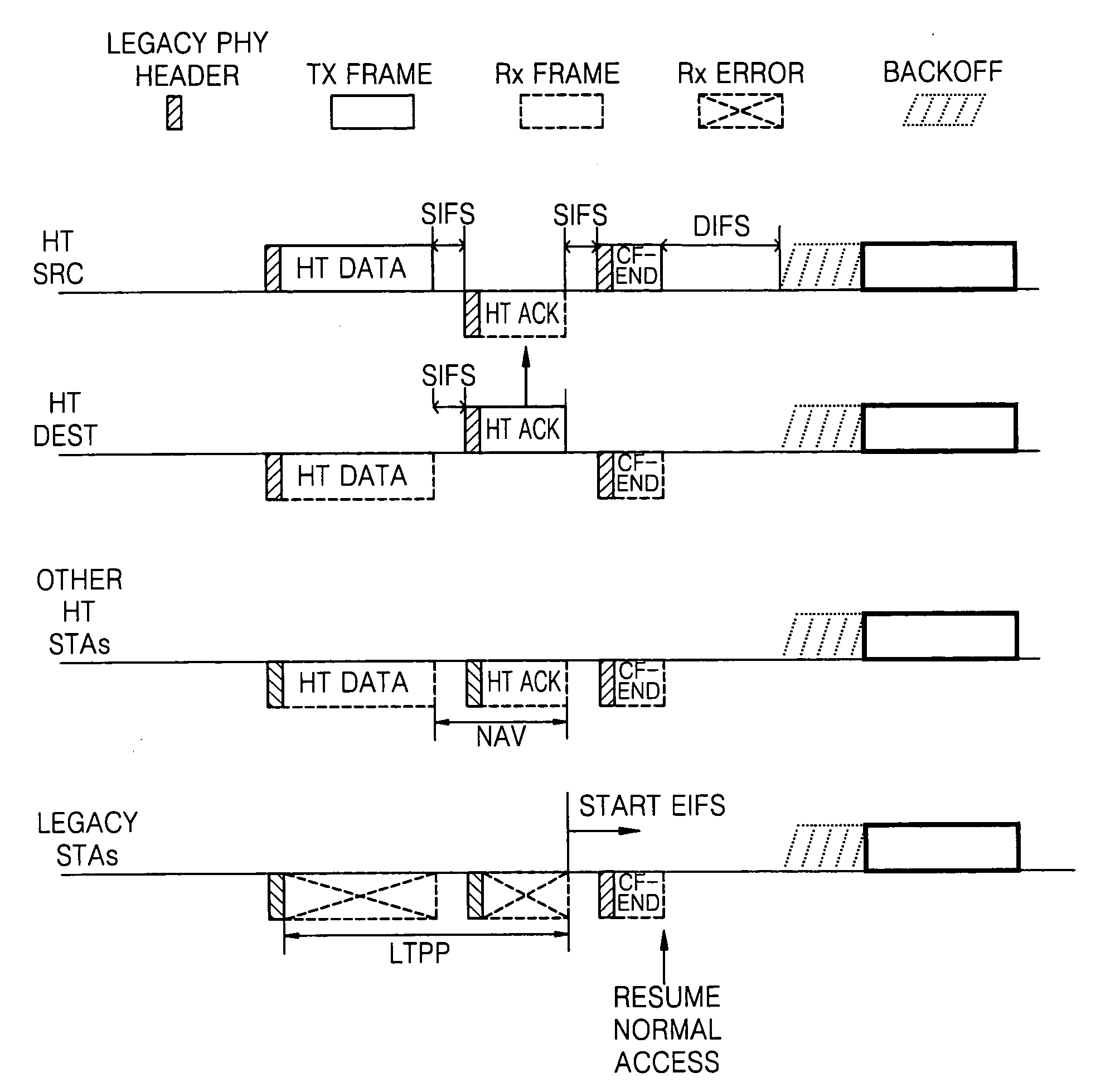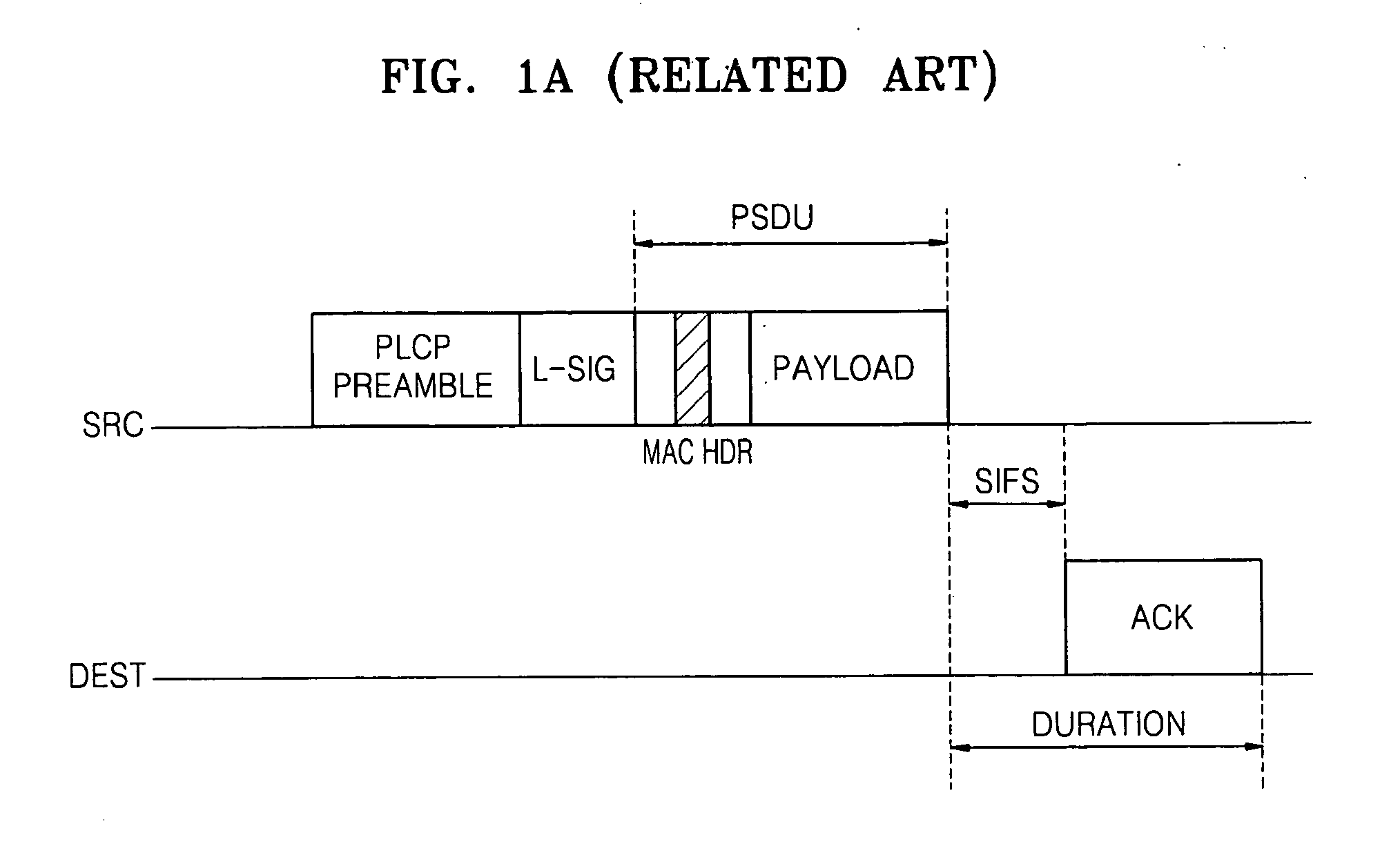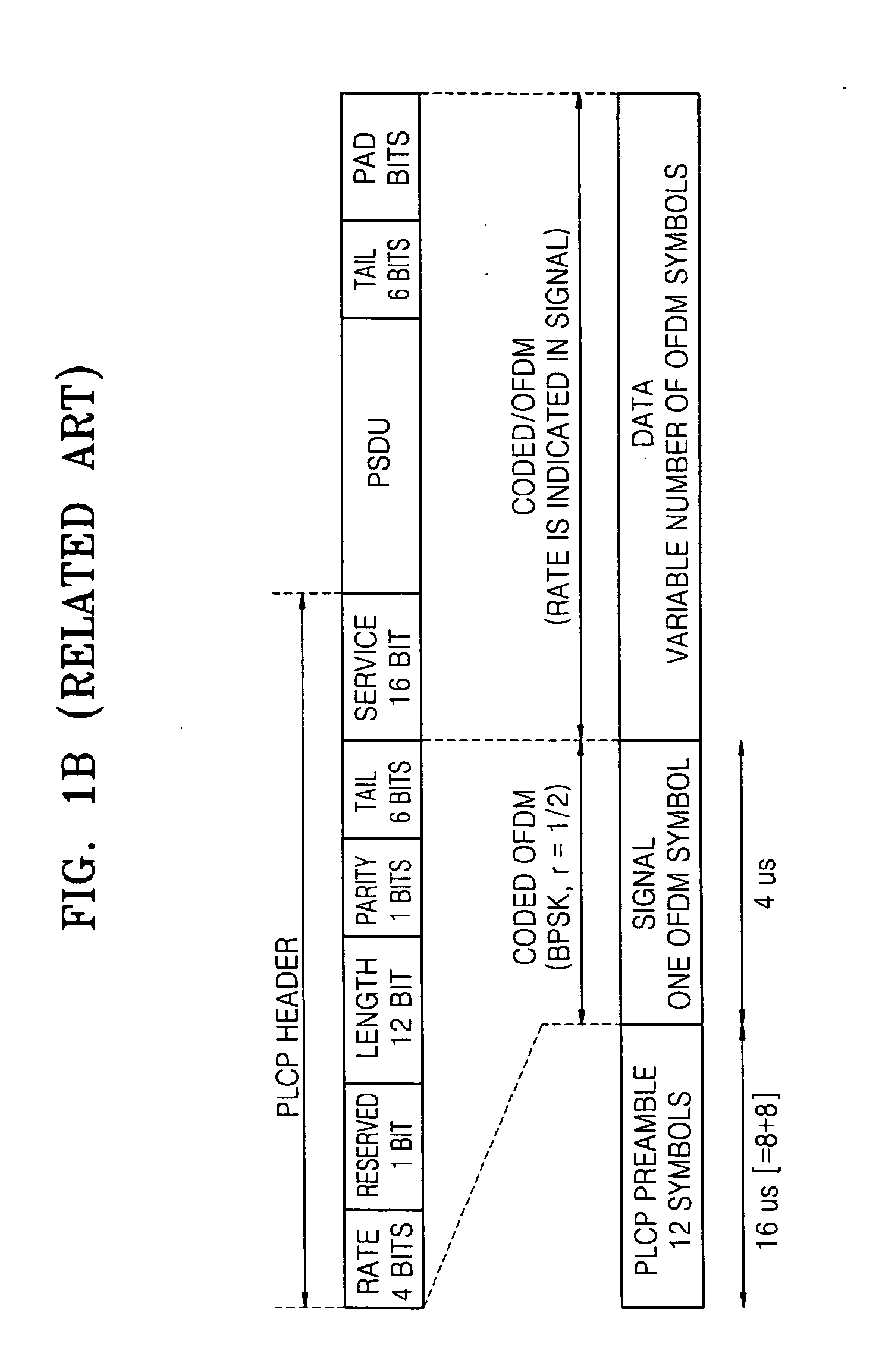Method and apparatus for transmitting data frame using channel bonding in wireless LAN
a wireless lan and data frame technology, applied in data switching networks, multiplex communication, assessing restrictions, etc., can solve the problems of legacy stations not being able to analyze the ht format frame, the ineffective csma/ca method, and the inability to carry out virtual carrier sensing
- Summary
- Abstract
- Description
- Claims
- Application Information
AI Technical Summary
Benefits of technology
Problems solved by technology
Method used
Image
Examples
Embodiment Construction
[0032]FIG. 4 illustrates a method for allowing stations to have a fair contention for medium access by using an LTPP mechanism according to an exemplary embodiment of the present invention.
[0033]A transmission opportunity (TxOP) is a time required for transmitting a data frame. A CF-End frame is a message for canceling a remaining TxOP when a transmitting station that has obtained the TxOP by using a request-to-send / clear-to-send (RTS / CTS) frame exchange sequence has no frame to be sent even if the TxOP is still left. Stations which receive the CF-End recognize that a medium is available to be accessed. Referring to FIG. 4, the transmitting station broadcasts a legacy format CF-End frame when a short inter-frame space (SIFS) elapses after the transmitting station receives an ACK frame for an HT format data frame.
[0034]Since the CF-End frame is a message indicating availability of a medium, after receiving the CF-End frame, an HT station and a legacy station can participate in conten...
PUM
 Login to View More
Login to View More Abstract
Description
Claims
Application Information
 Login to View More
Login to View More - R&D
- Intellectual Property
- Life Sciences
- Materials
- Tech Scout
- Unparalleled Data Quality
- Higher Quality Content
- 60% Fewer Hallucinations
Browse by: Latest US Patents, China's latest patents, Technical Efficacy Thesaurus, Application Domain, Technology Topic, Popular Technical Reports.
© 2025 PatSnap. All rights reserved.Legal|Privacy policy|Modern Slavery Act Transparency Statement|Sitemap|About US| Contact US: help@patsnap.com



